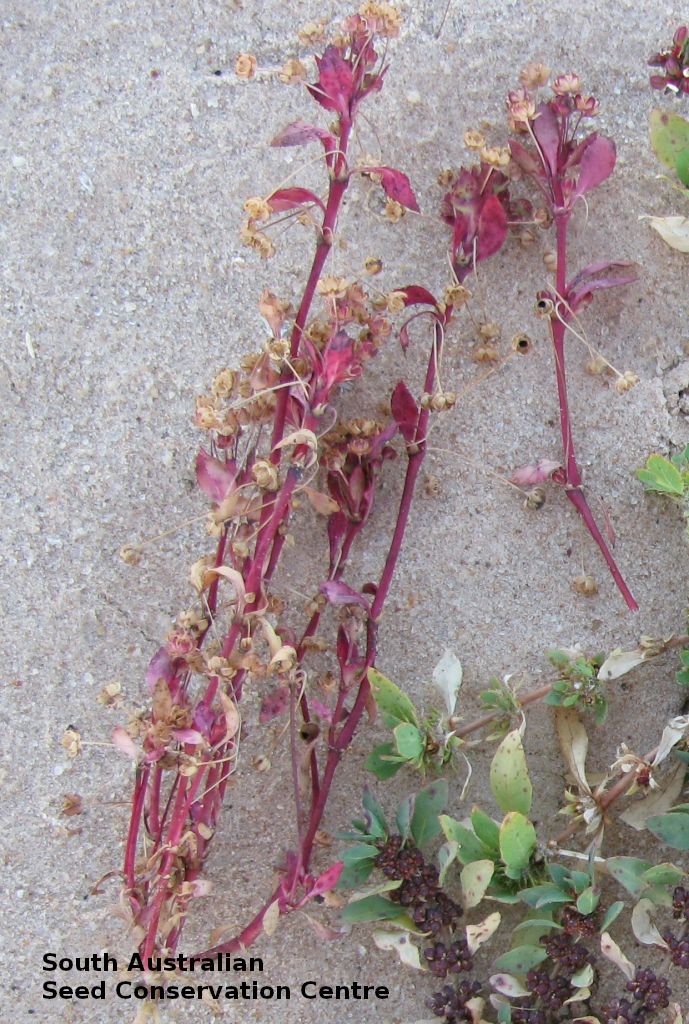
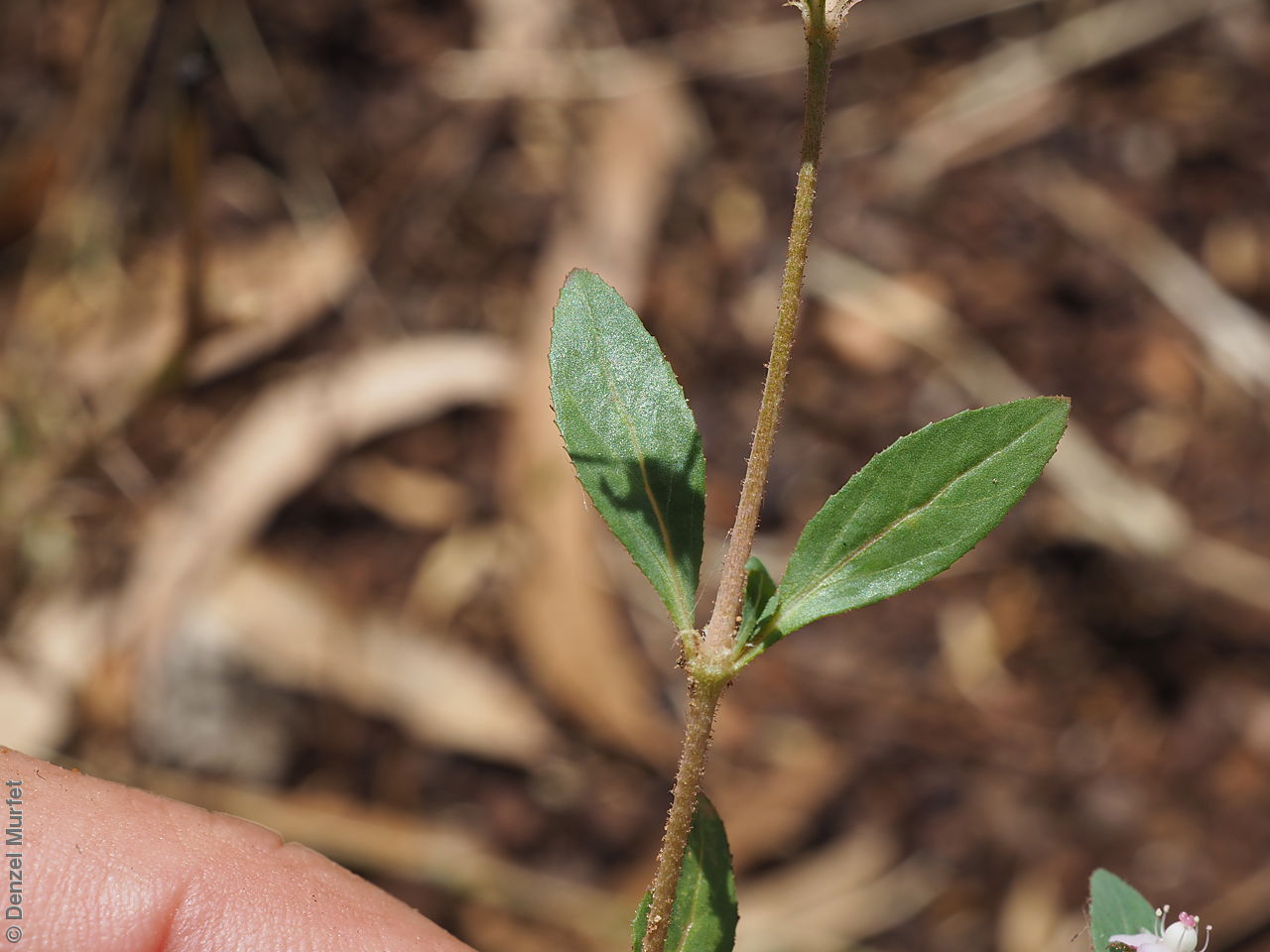
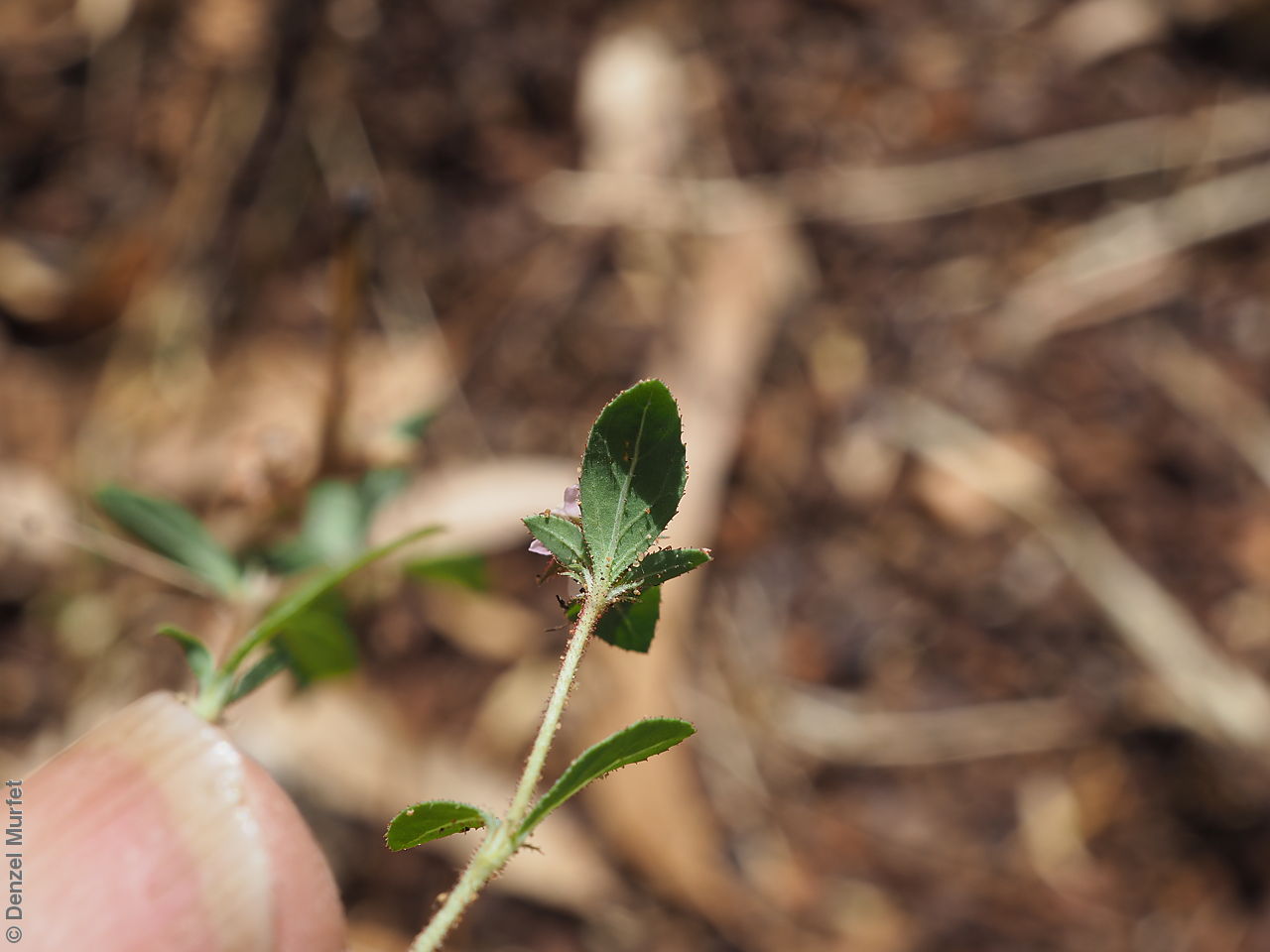
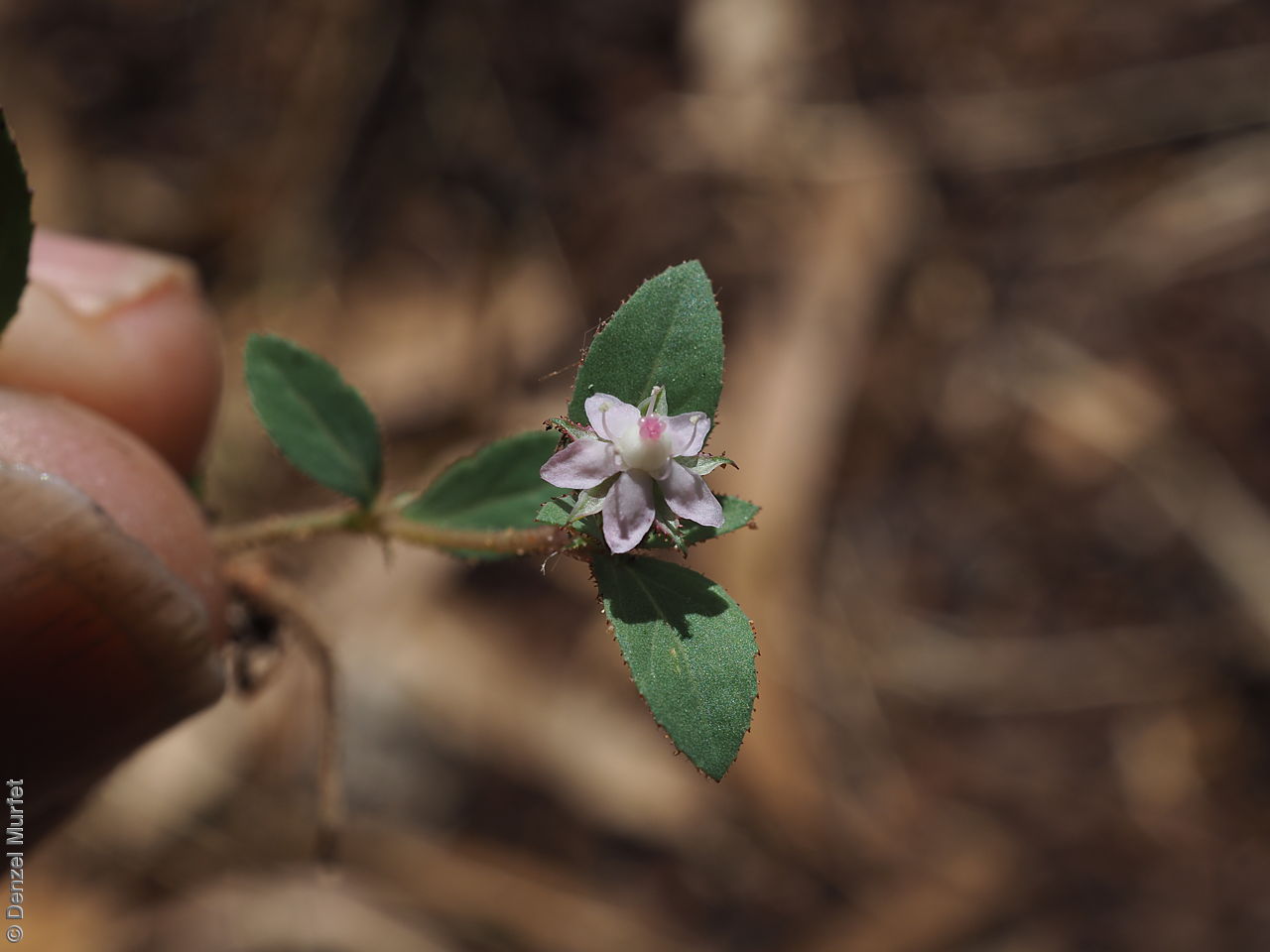
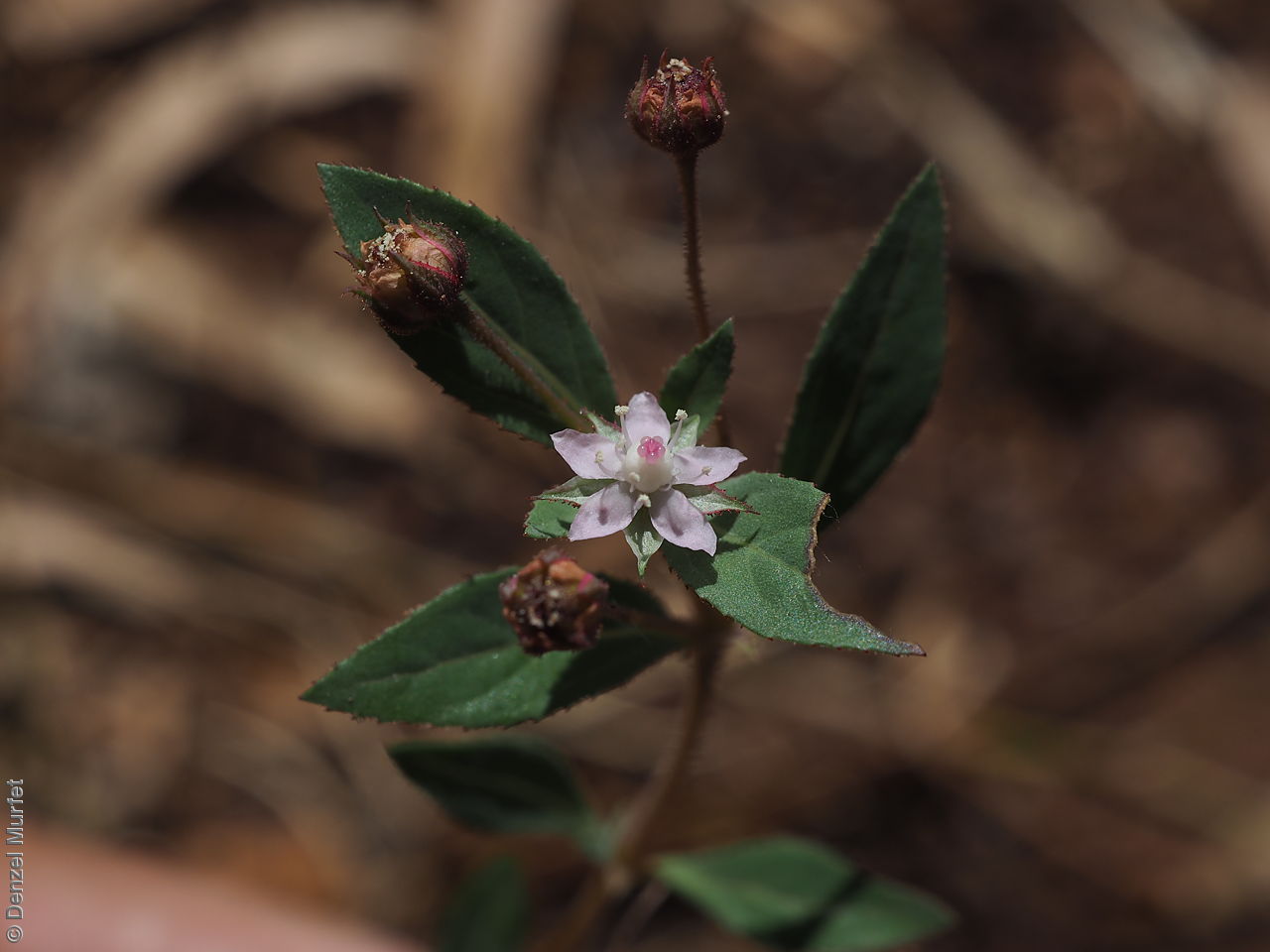
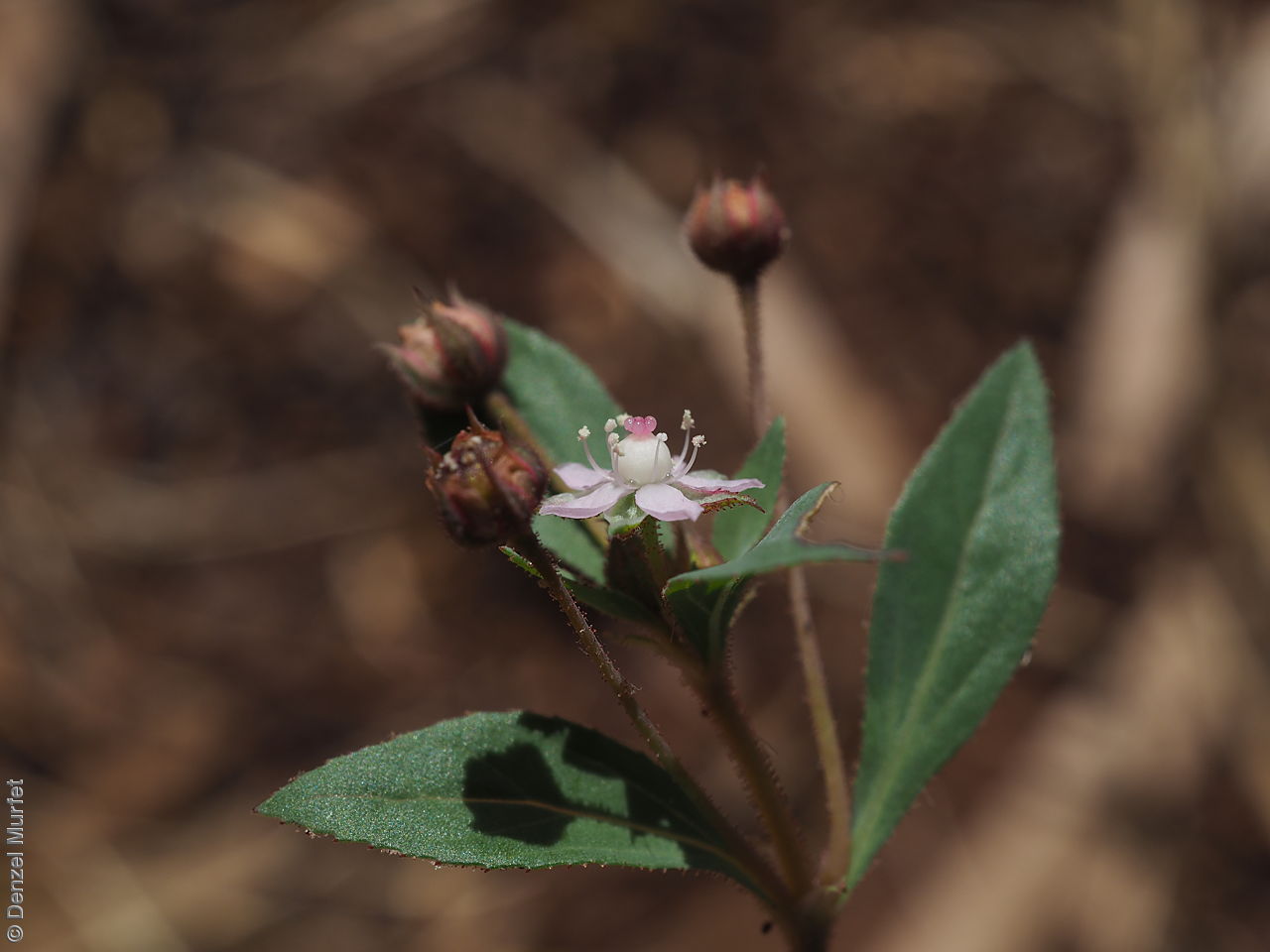
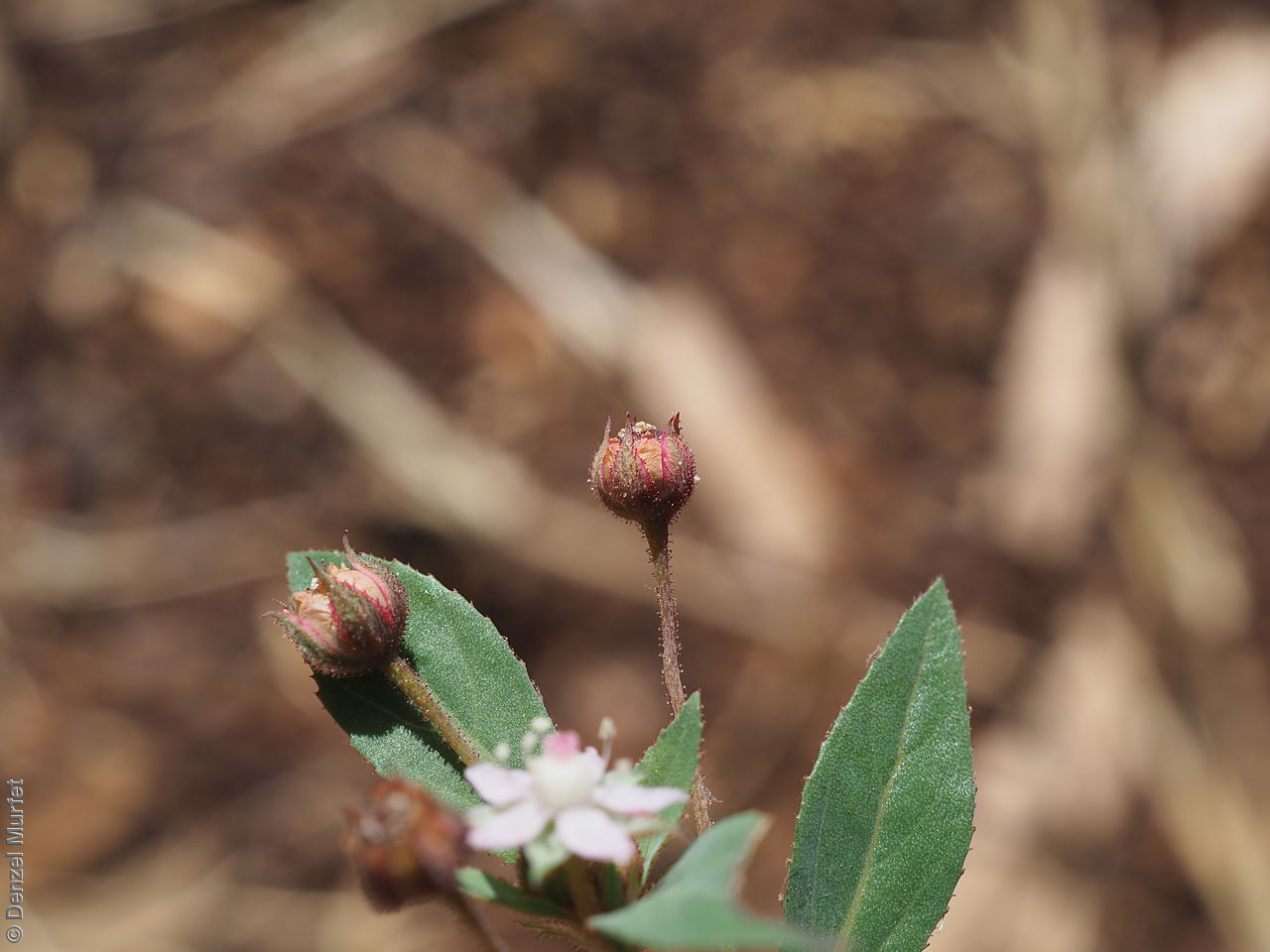
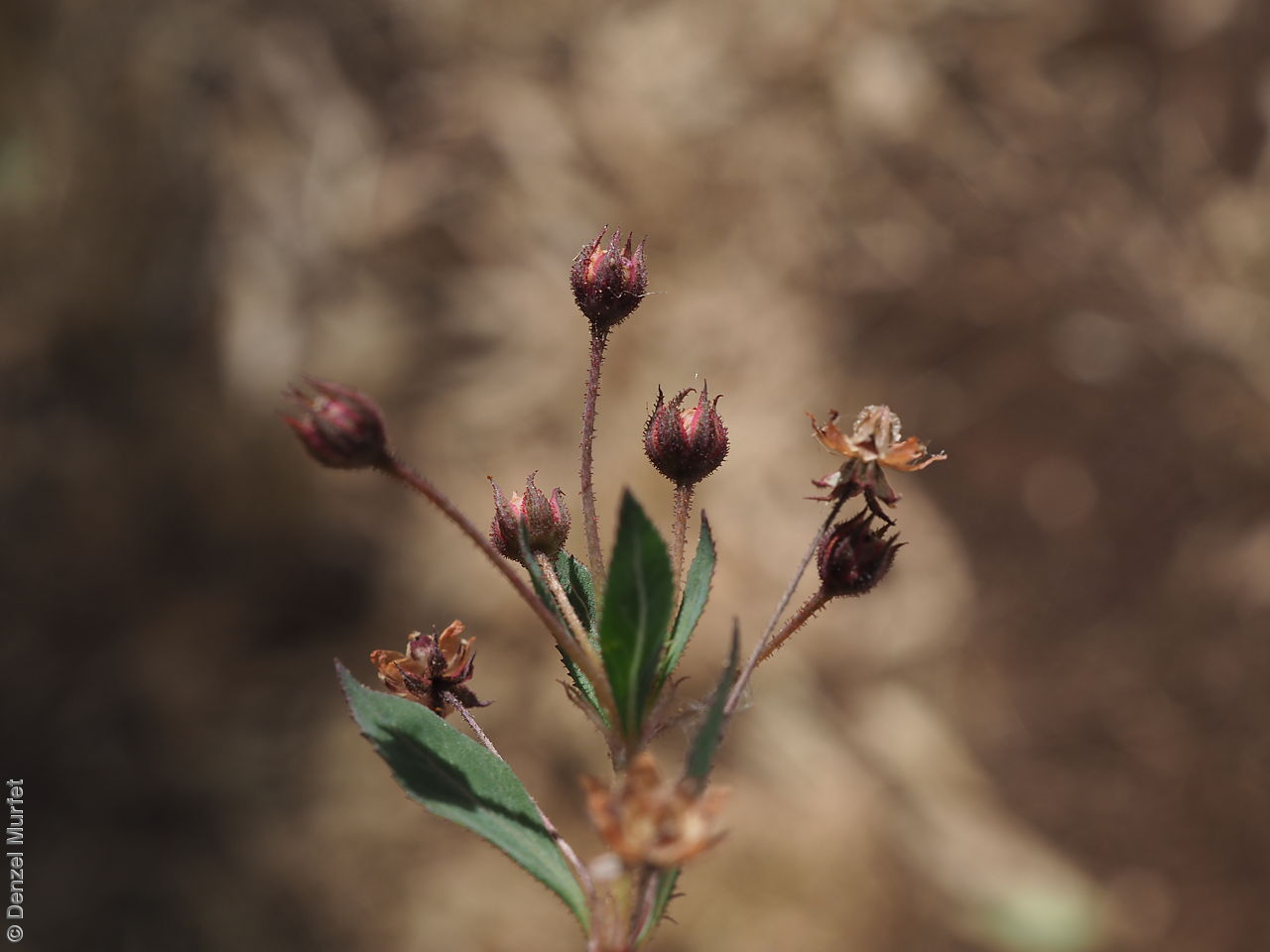
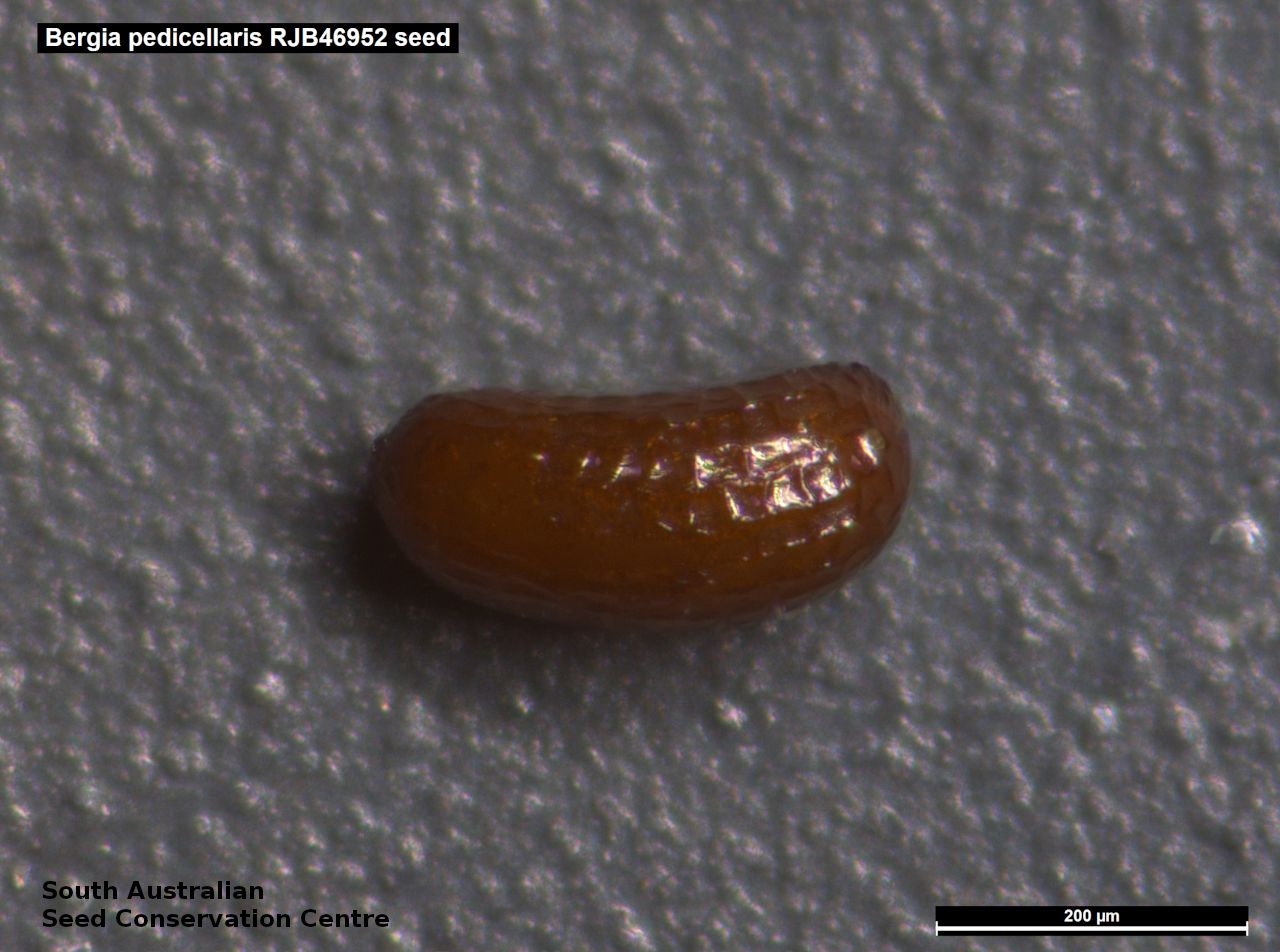
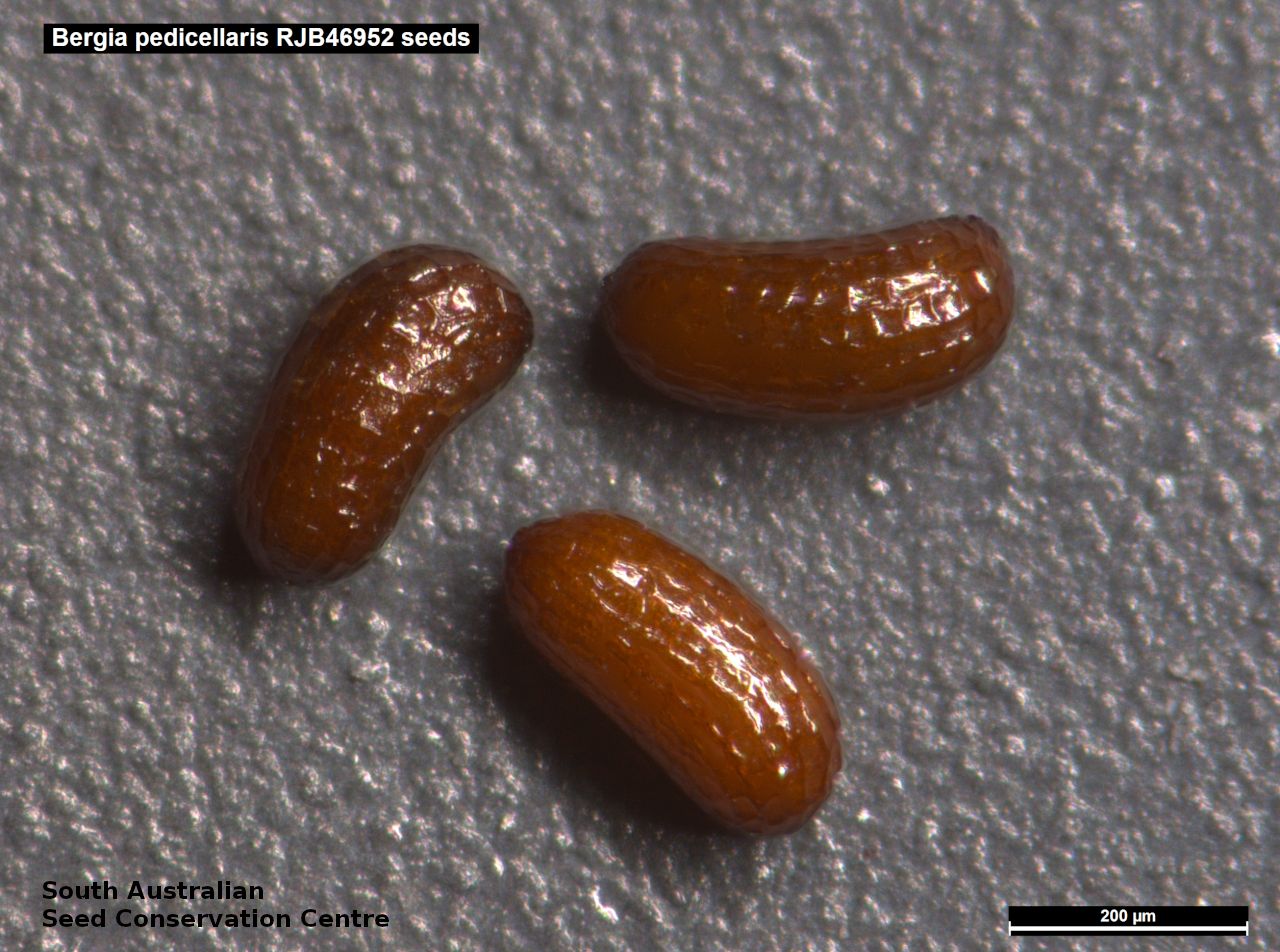
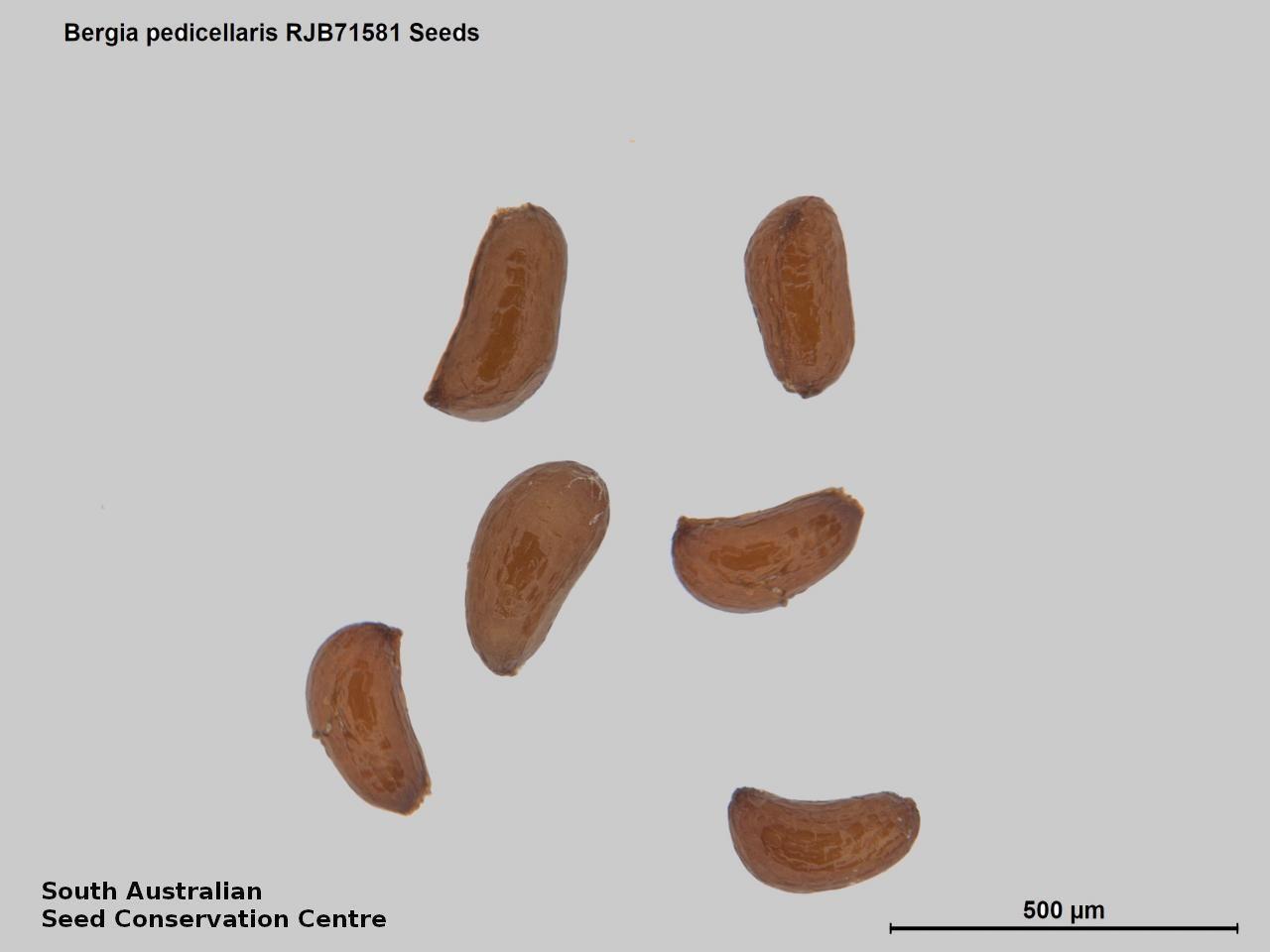


Prior names
Elatine pedicellaris
Etymology
Bergia named after Dr Petter Jonas Bergius (1730-90), Swedish physician and botanist. Pedicellaris means with little pedicels; referring to the prominent long pedicels of this species.
Distribution and status
Few records from the north-east corner of South Australia, growing on cracking clay soils, rarely on alluvial sandy soils. Also found in Western Australia, Northern Territory and Queensland. Native. Uncommon in South Australia. Common in other states.
Herbarium region: Lake Eyre
NRM region: South Australian Arid Lands
AVH map: SA distribution map (external link)
Plant description
Spreading or erect annual herb to 30 cm high. Leaves elliptic to narrow-elliptic, to 35 mm long and 11 mm wide, acute, glandular hairy on midvein and at base, margin serrate, mid-vein prominent. Flowers single or paired, green or pink. Bracteoles at base of pedicels, narrow-triangular, to 1 mm long and 0.1 mm wide. Sepals 5, ovate, to 3.5 mm long and 1.5 mm wide, acuminate, glandular-pubescent, margin with a fringe. Fruits are brown globular capsule to 3.5 mm diameter. Seeds are slightly curved, brown, ovoid seed to 0.5mm long with a smooth and shiny surface. Seed embryo type is linear.
Seed collection and propagation
Collect seeds between May and July. Collect whole plant with maturing capsules, those turning brown and contain brown seeds. Place the plant in a tray and leave to dry for one to two weeks. Then rub the plant especially the capsules gently by hand to dislodge the seeds. Use a fine sieve to separate the unwanted material. Be very careful as the seeds are very small. The seeds are shiny brown. Store the seeds with a desiccant such as dried silica beads or dry rice, in an air tight container in a cool and dry place. From one collection, the seed viability was average, at 65%.
| Location | No. of seeds (weight grams) | Number of plants | Date collected | Collection number Collection location | Date stored | % Viability | Storage temperature |
|---|---|---|---|---|---|---|---|
| BGA MSB | 60,000 (0.22 g) 60,000 (0.22 g) | 50 | 8-May-2007 | RJB71581B Lake Eyre | 1-Aug-2007 | 65% | -18°C |
Number of plants: This is the number of plants from which the seeds were collected.
Collection location: The Herbarium of South Australia's region name.
% Viability: Percentage of filled healthy seeds determined by a cut test or x-ray.